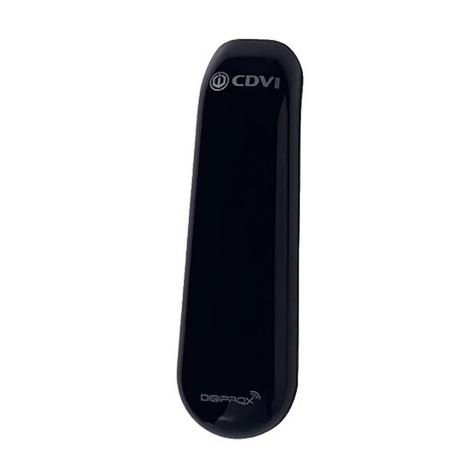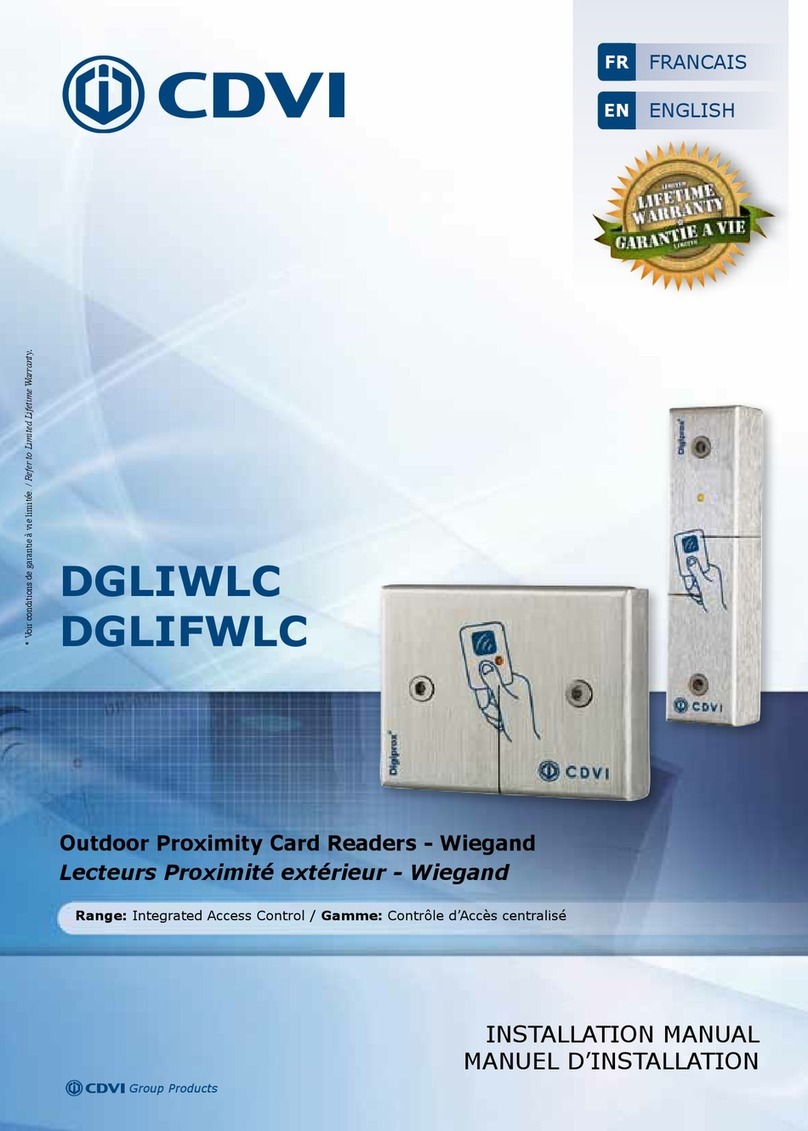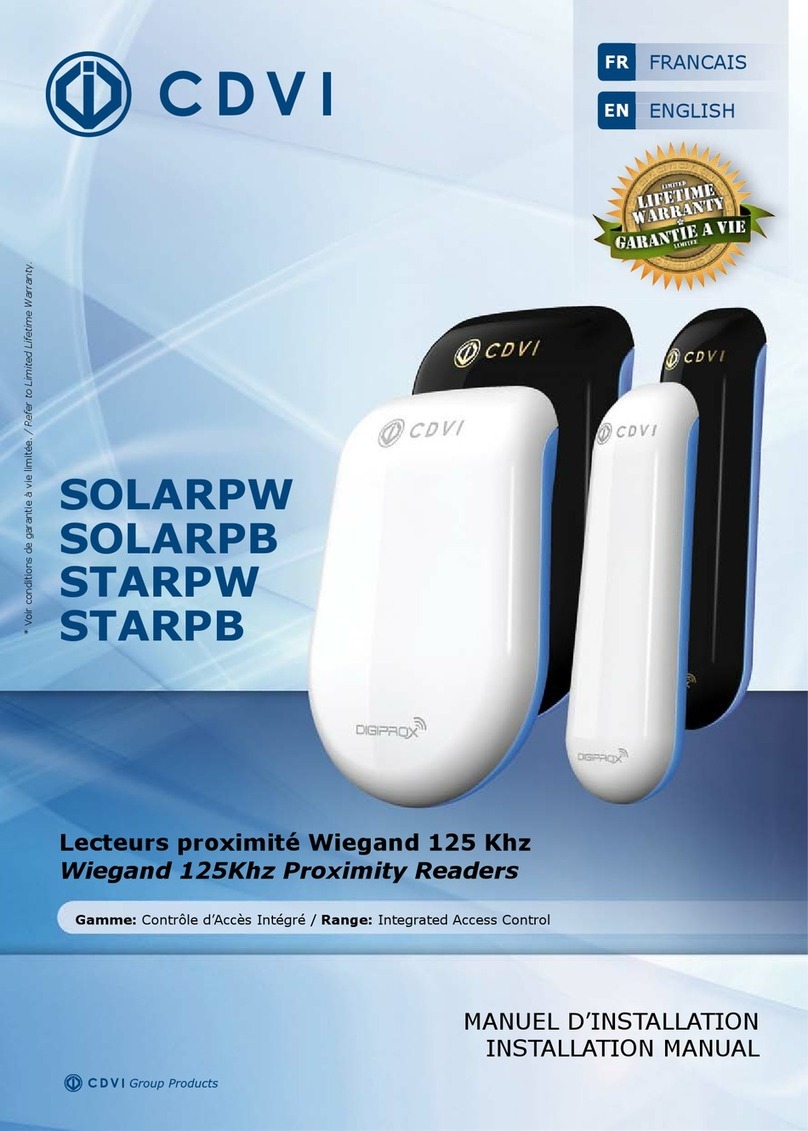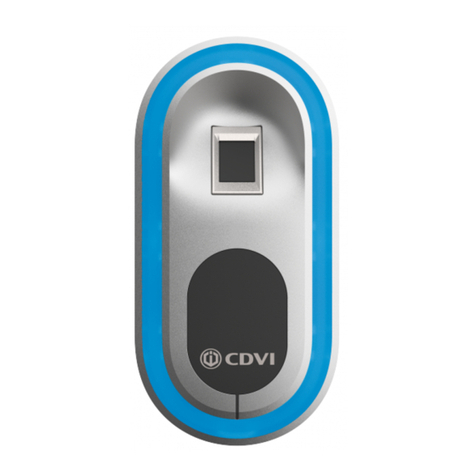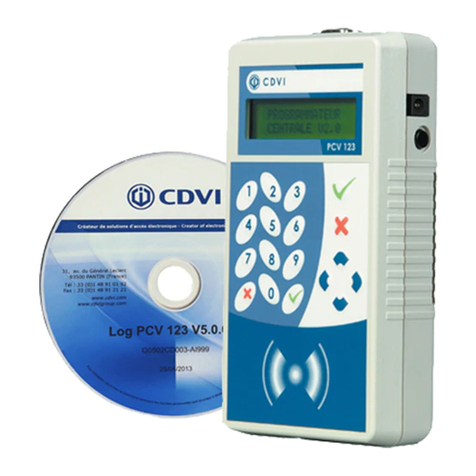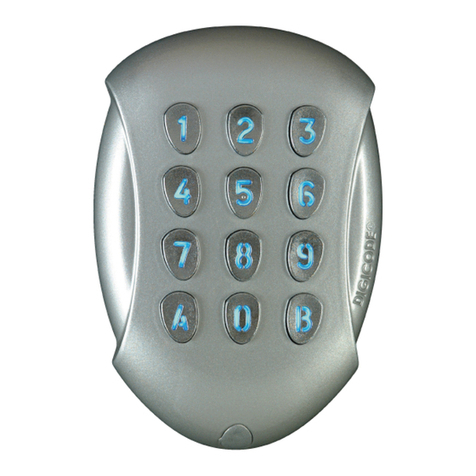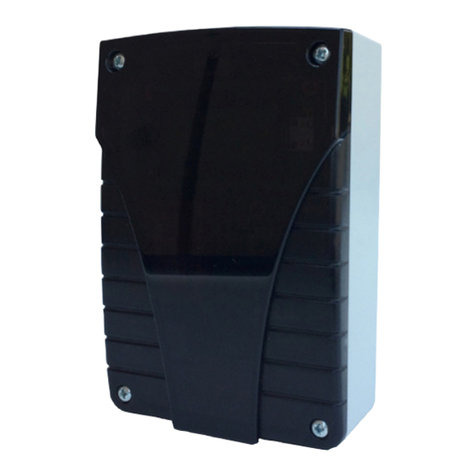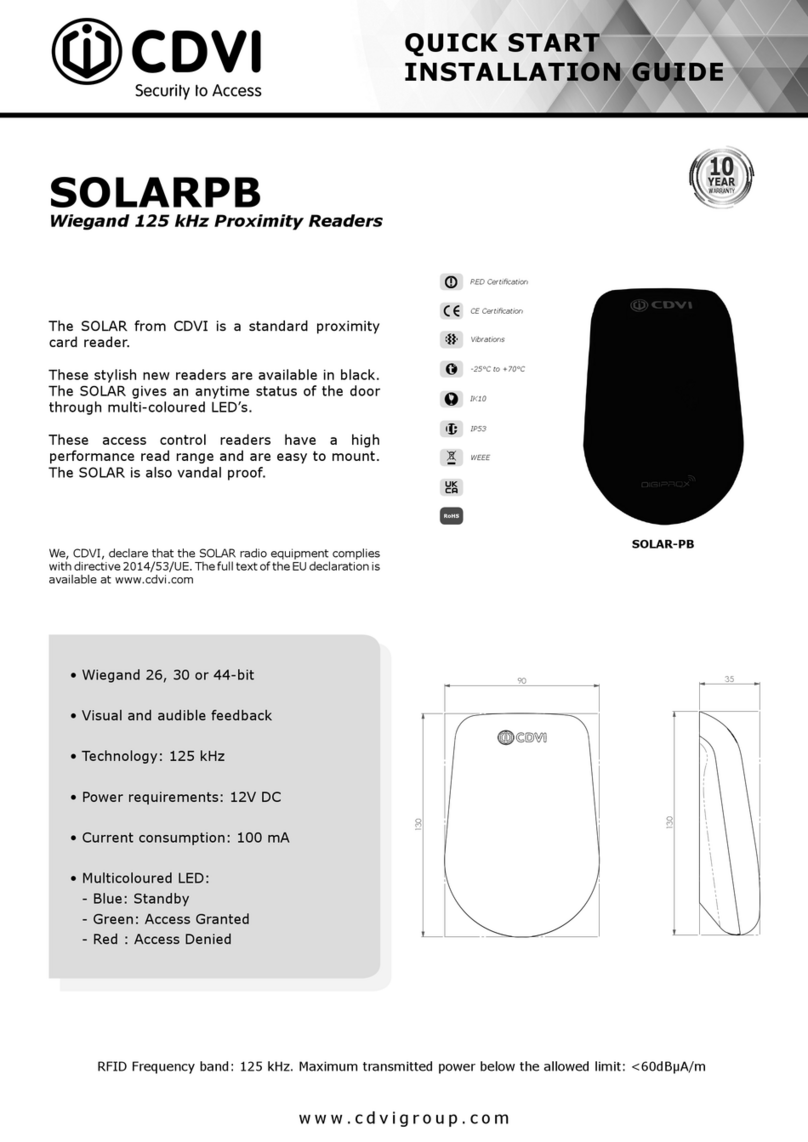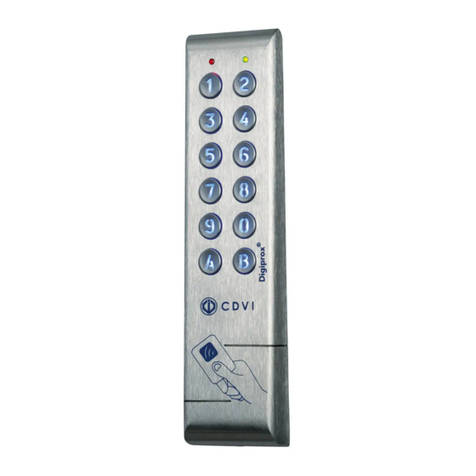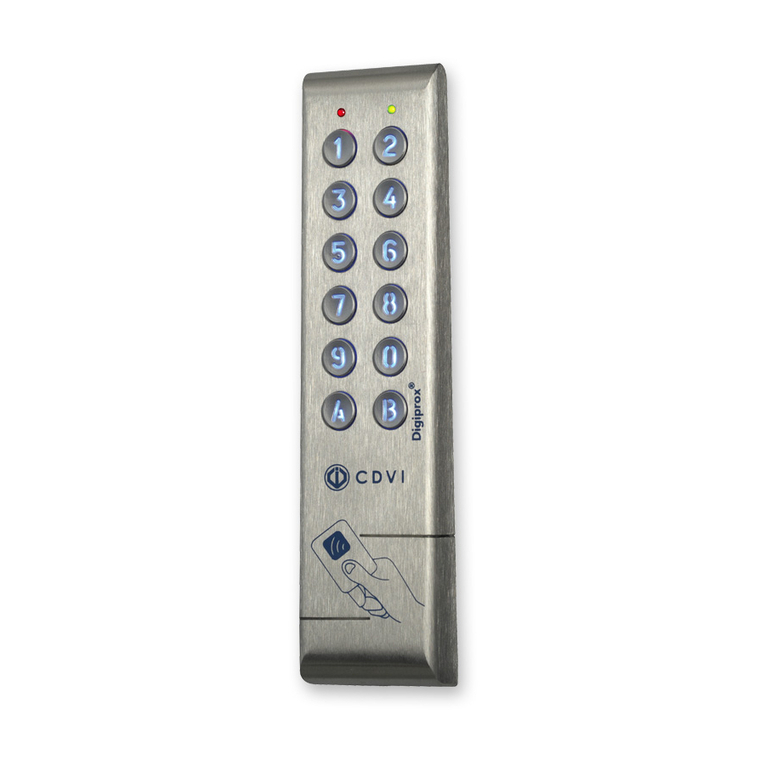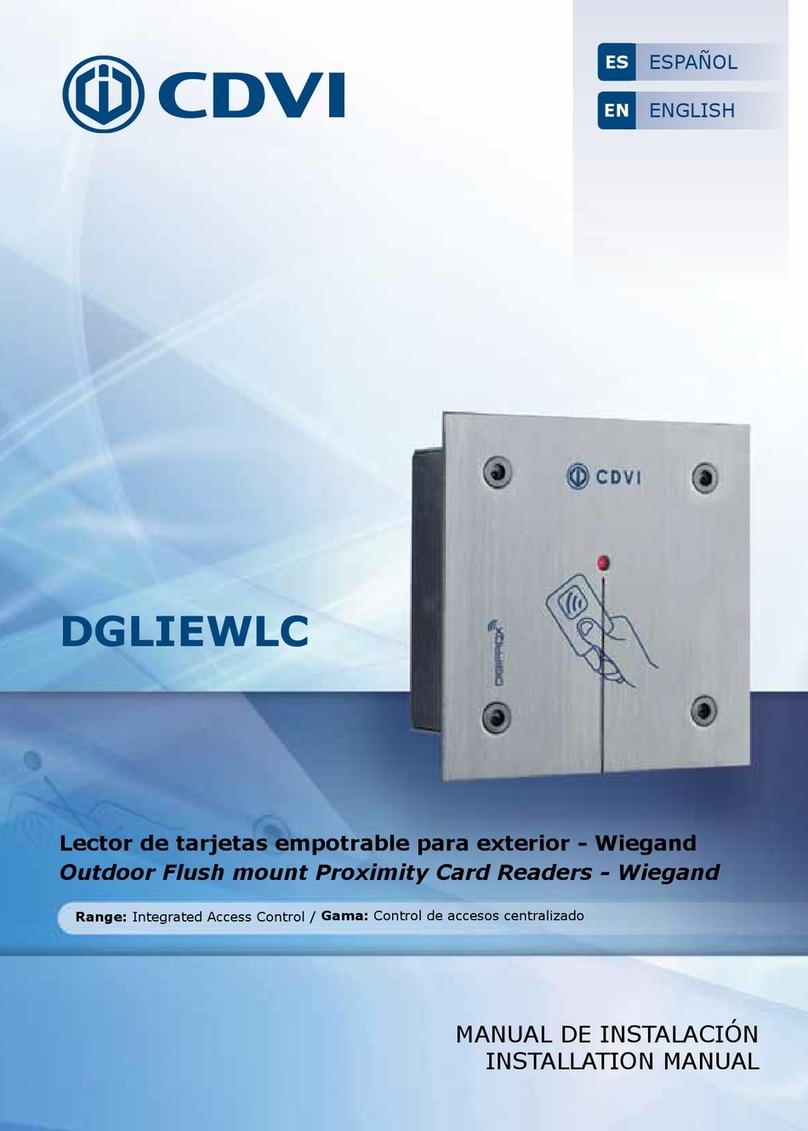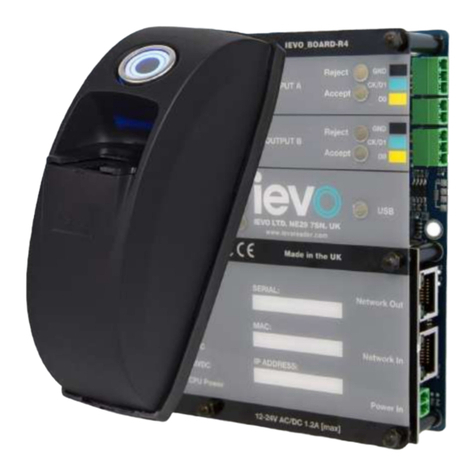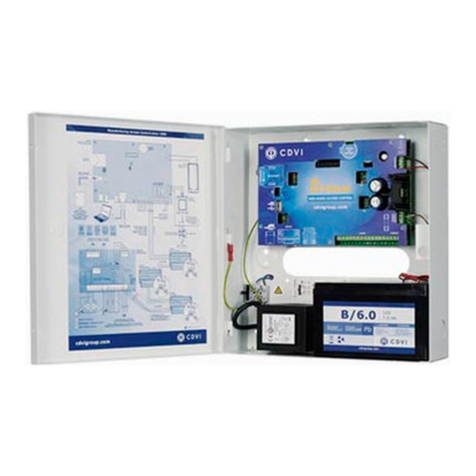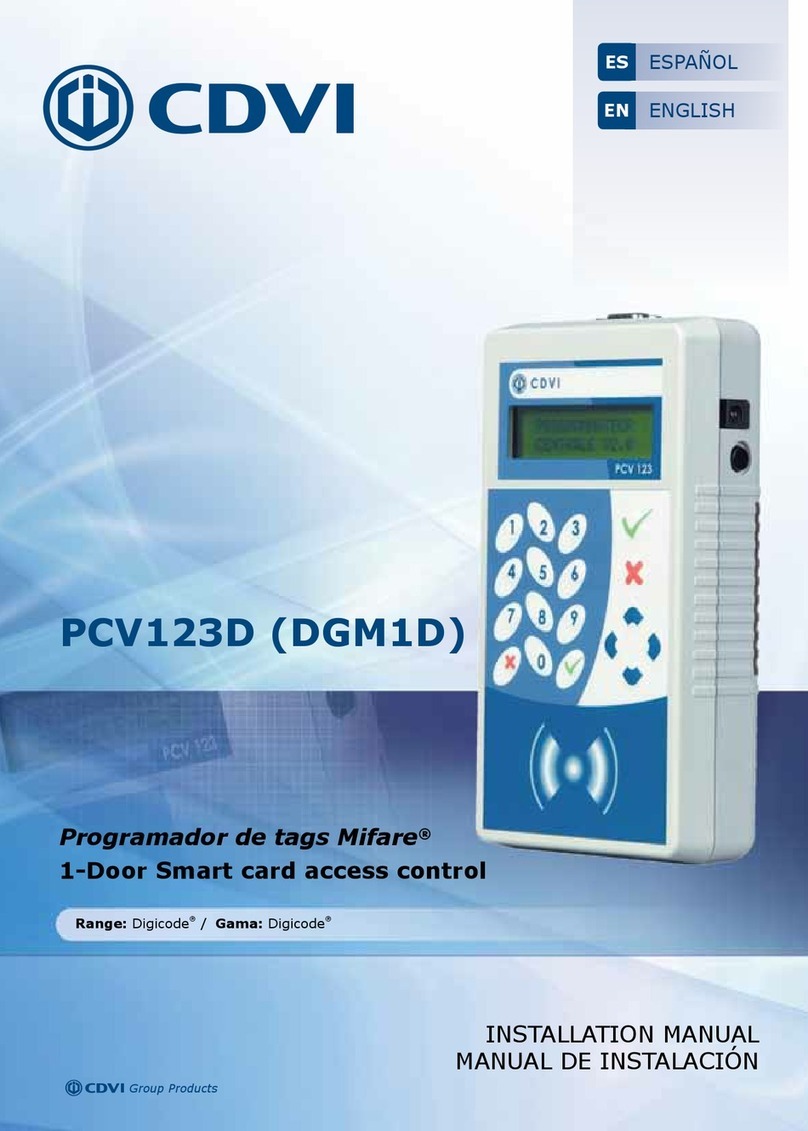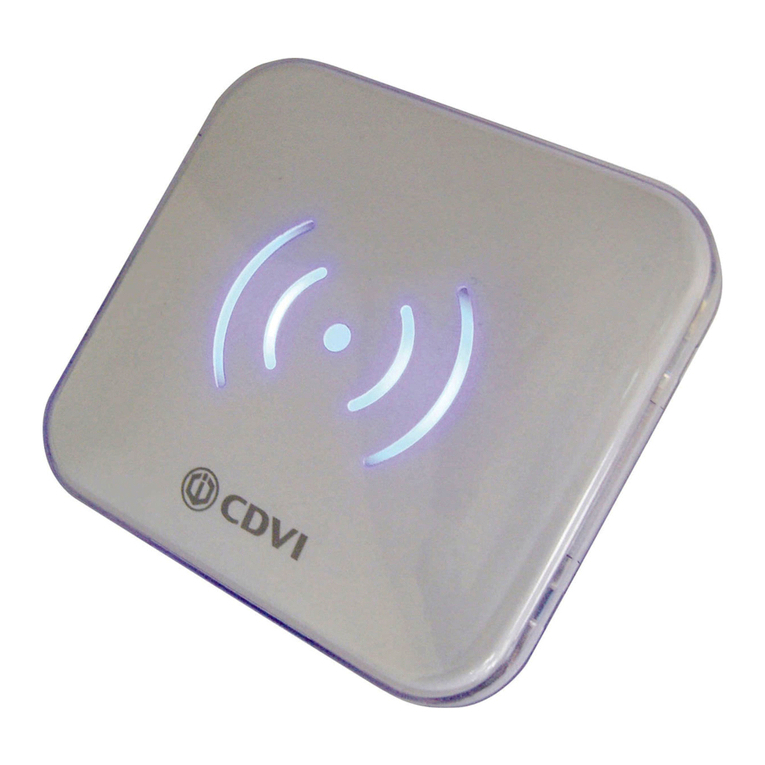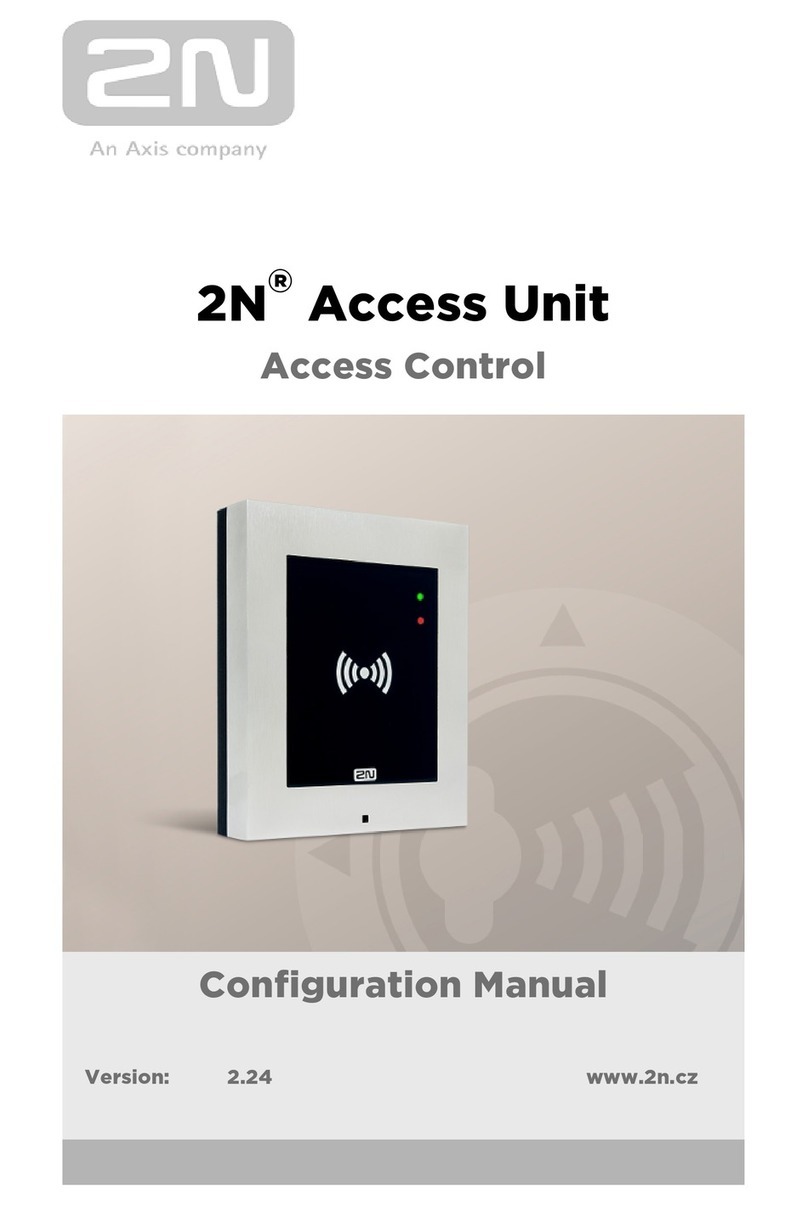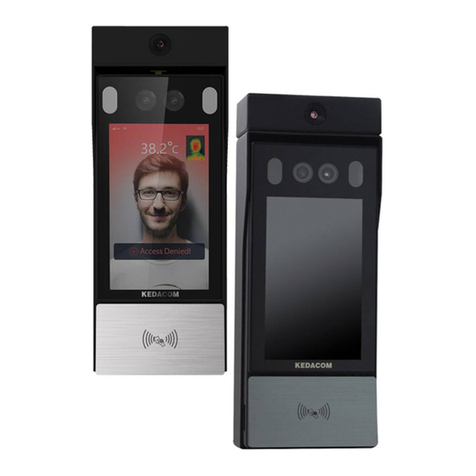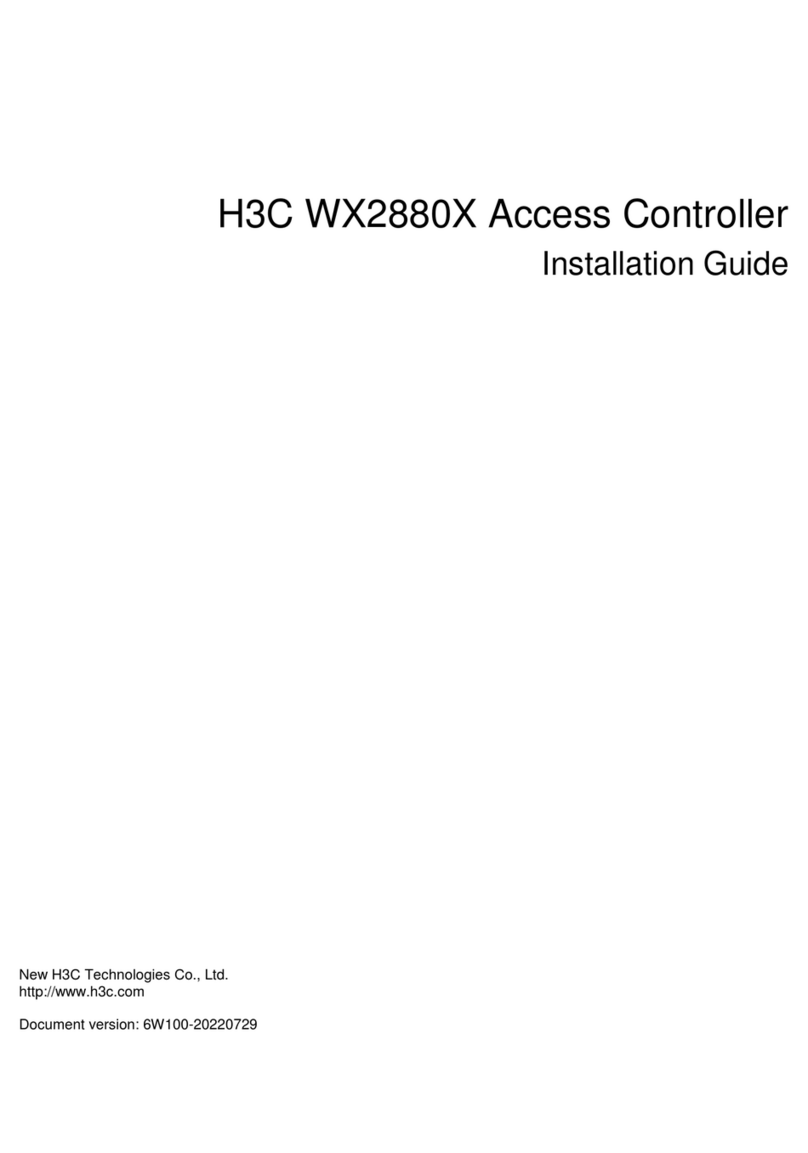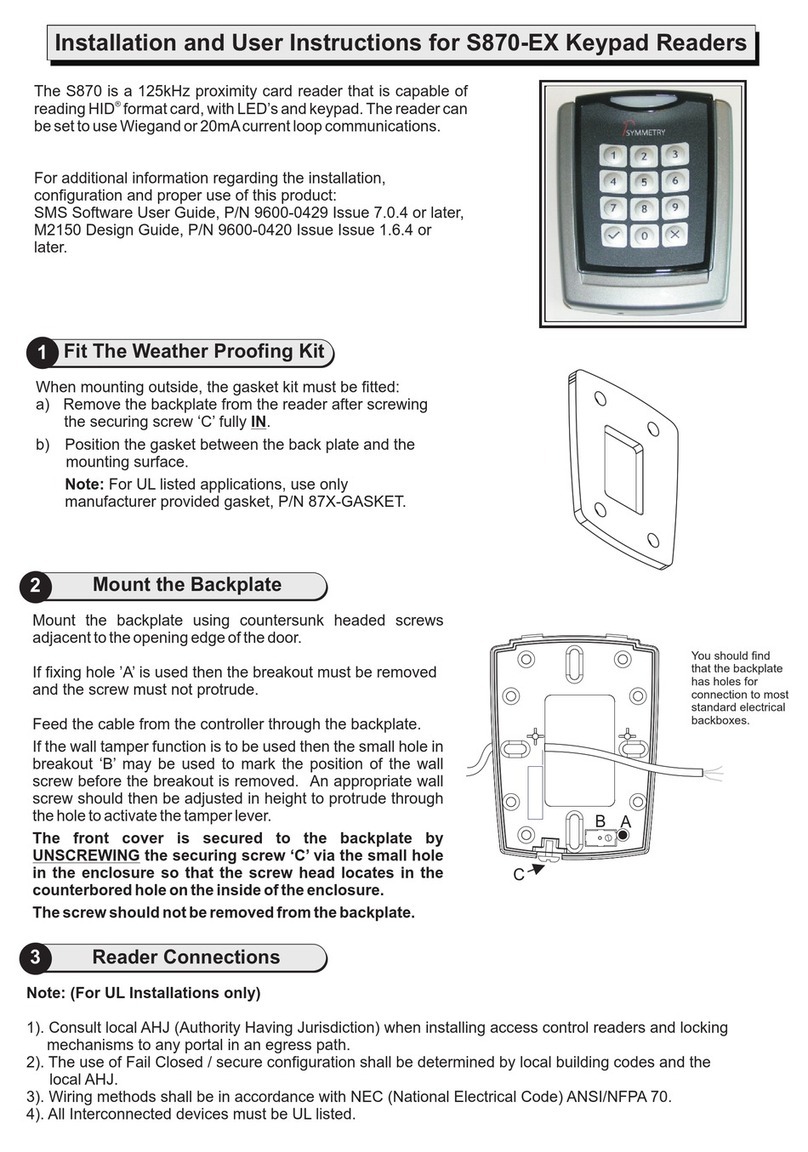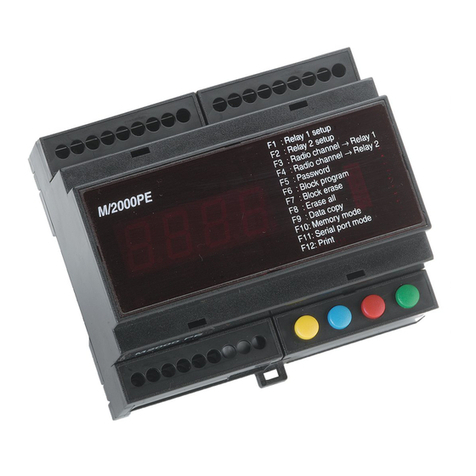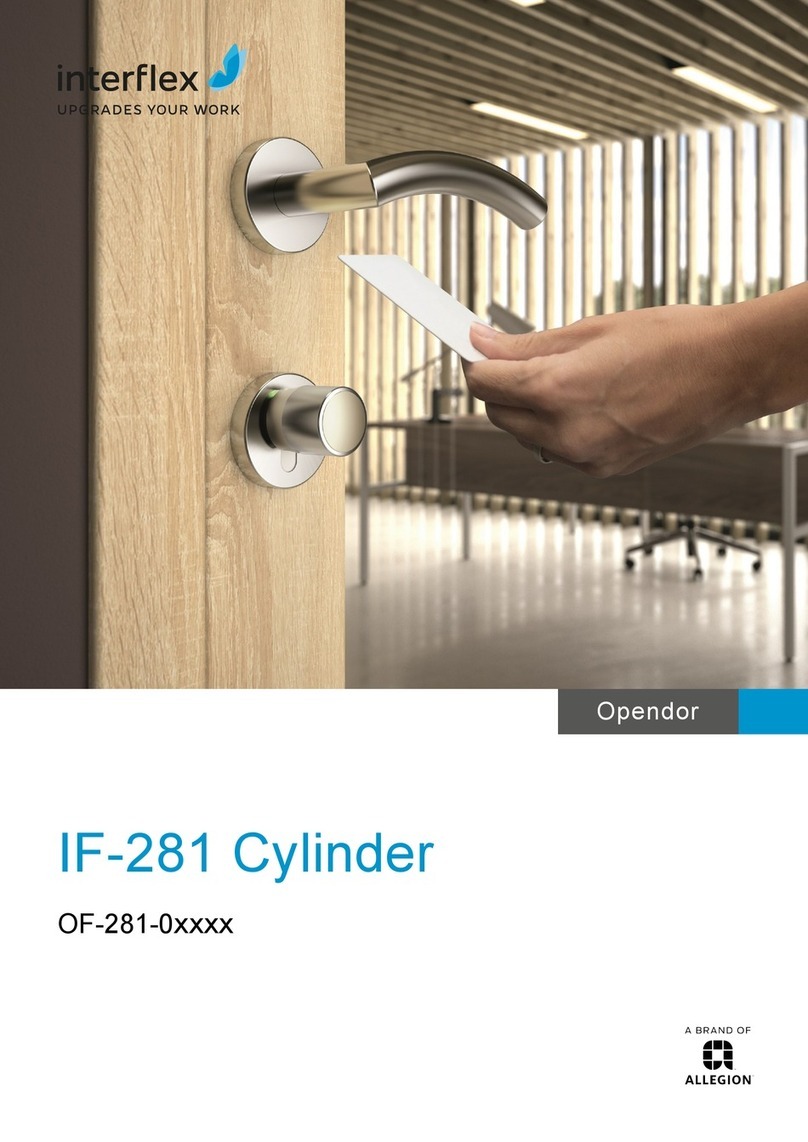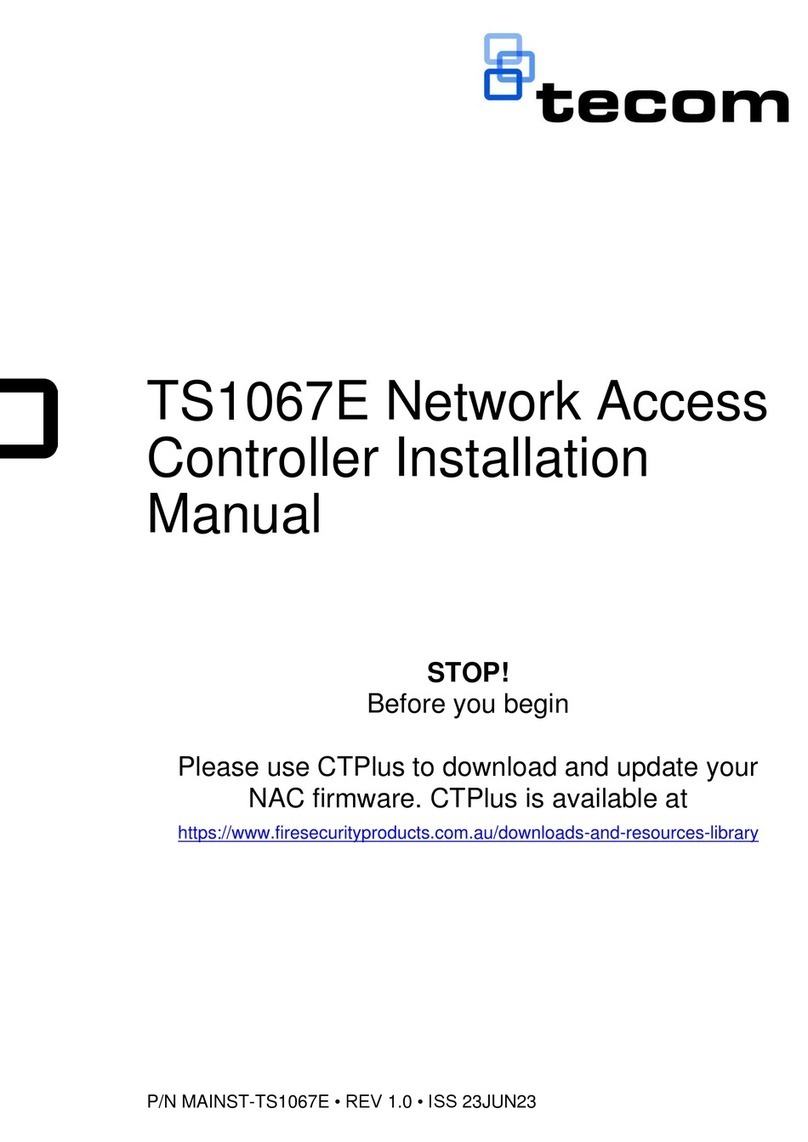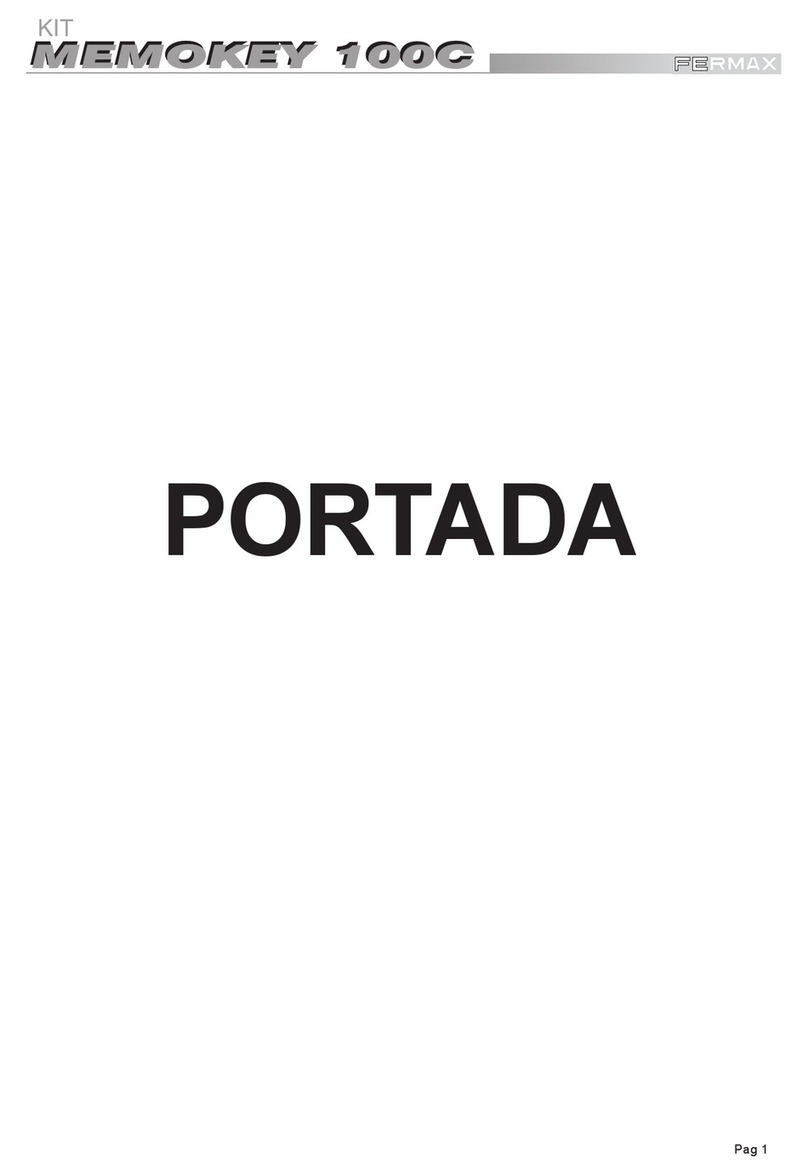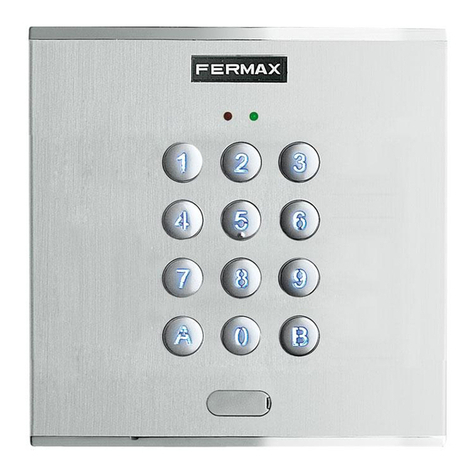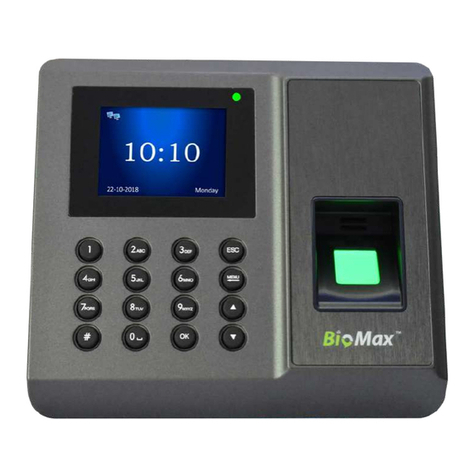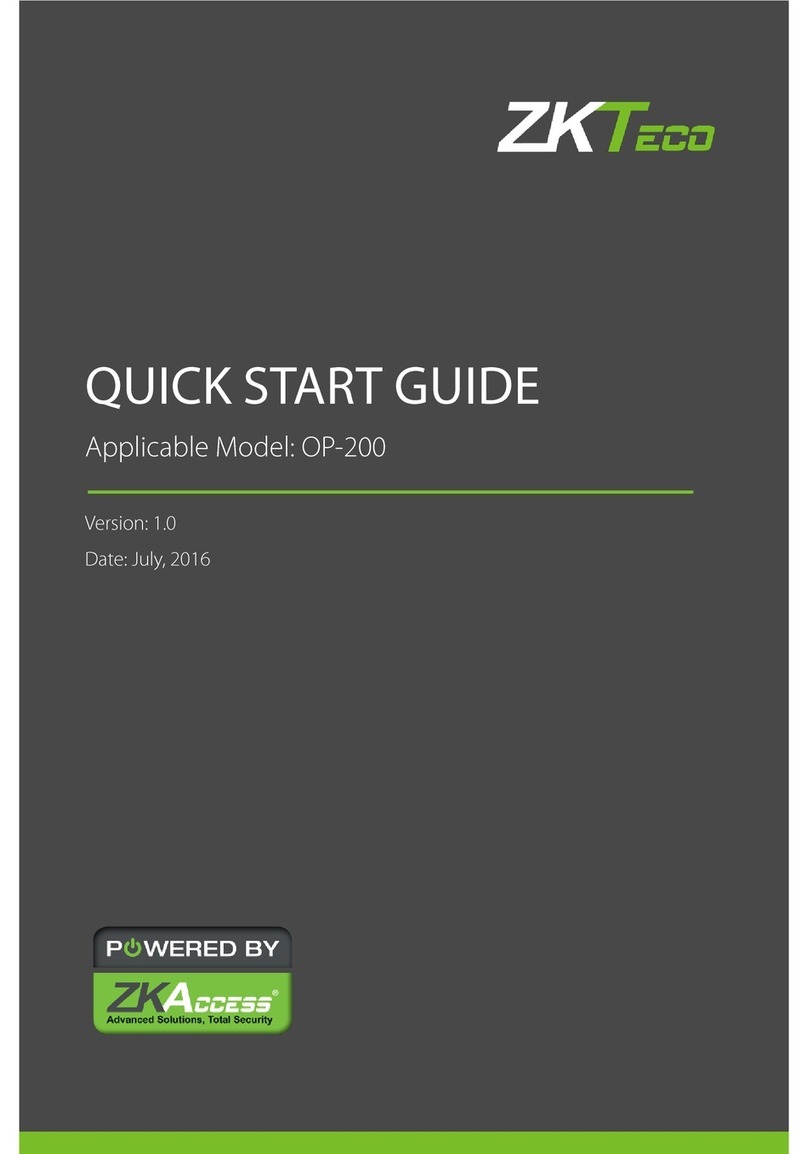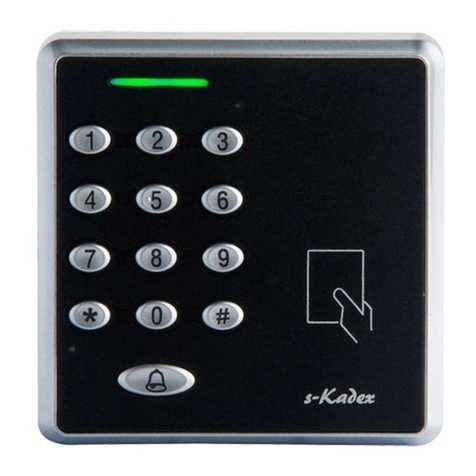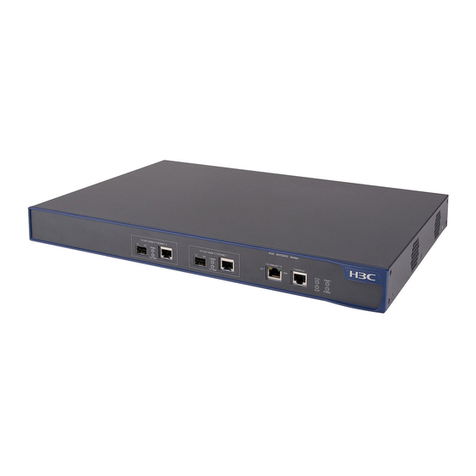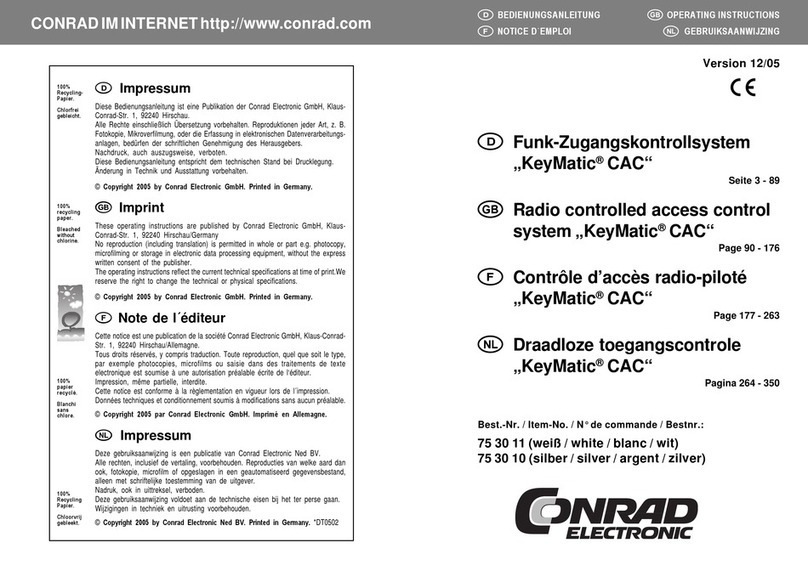
5
cdvi.com
cdvigroup.com
ES
DGLIWLC - DGLIFWLC
Lector de tarjetas de proximidad Wiegand
MANUAL DE INSTALACIÓN
Formato Wiegand 30 bits
Formato de 30 bits hexadecimal.
La comunicación se efectúa por una conexión Wiegand de 30 bits (señales:
DATA1, DATA0 y CLOCK) en la que la trama se descompone de la siguiente manera:
1 - Primera paridad: 1 bit – paridad par de los primeros 14 bits.
Código del tag: Se forma con 7 mitades de un byte.
Cada byte se transere desde el bit 7 al bit 0.
2 - Segunda paridad: 1 bit – paridad impar de los últimos 12 bits.
Bit 1 Bit 2 a bit 29 Bit 30
Paridad par de bit 2 a bit 15 Datos (28 bits) Paridad impar de bit 16 a bit 29
Ejemplo A: para una tarjeta cuyo código decimal es 689905 (en hexadécimal: A86F1).
1 0000 0000 1010 0110 0110 1111 0001 0
Paridad 1 0 0 A 8 6 F 1 Paridad 2
El código que se transmite en hexadecimal es 00A86F1.
Ejemplo B: para una tarjeta cuyo código en hexadecimal es 0100166A37.
1 0000 0000 0001 0001 0110 1011 0110 1
Paridad 1 0 0 6 6 A 3 7 Paridad 2
El código que se transmite en hexadecimal es 0166A37.
Paridad 1: «0» si el número de 1 desde el bit 2 al bit 15 es par.
«1» si el número de 1 desde el bit 2 al bit 15 es impar.
Paridad 2: «0» si el número de 1 desde el bit 16 al bit 29 es impar.
«1» si el número de 1 desde el bit 16 al bit 29 es par.
Formato Wiegand 44 bits
Formato de 44 bits hexadecimal. La comunicación se efectúa por una conexión Wiegand de 44 bits (señales:
DATA1, DATA0 y CLOCK) en la que la trama se descompone de la siguiente manera:
Datos: SN de 10 dígitos en hexadecimal (MSByte en primer lugar).
Cada dígito en hexadecimal = 4 bit (MSBit en primer lugar).
LRC: 4 bit = O restringido entre los dígitos de los datos (MSBit en primer lugar).
Bit 1 a bit 40 Bit 41 a bit 44
SN de la tarjeta, MSBit primero LRC
Ejemplo A: para una tarjeta EM cuyo código en hexadecimal es 01001950C3.
0000 0000 0000 0000 0001 1001 0101 0000 1100 0011 0011
01001950C33
El código que se transmite en hexadecimal es 01001950C3.
